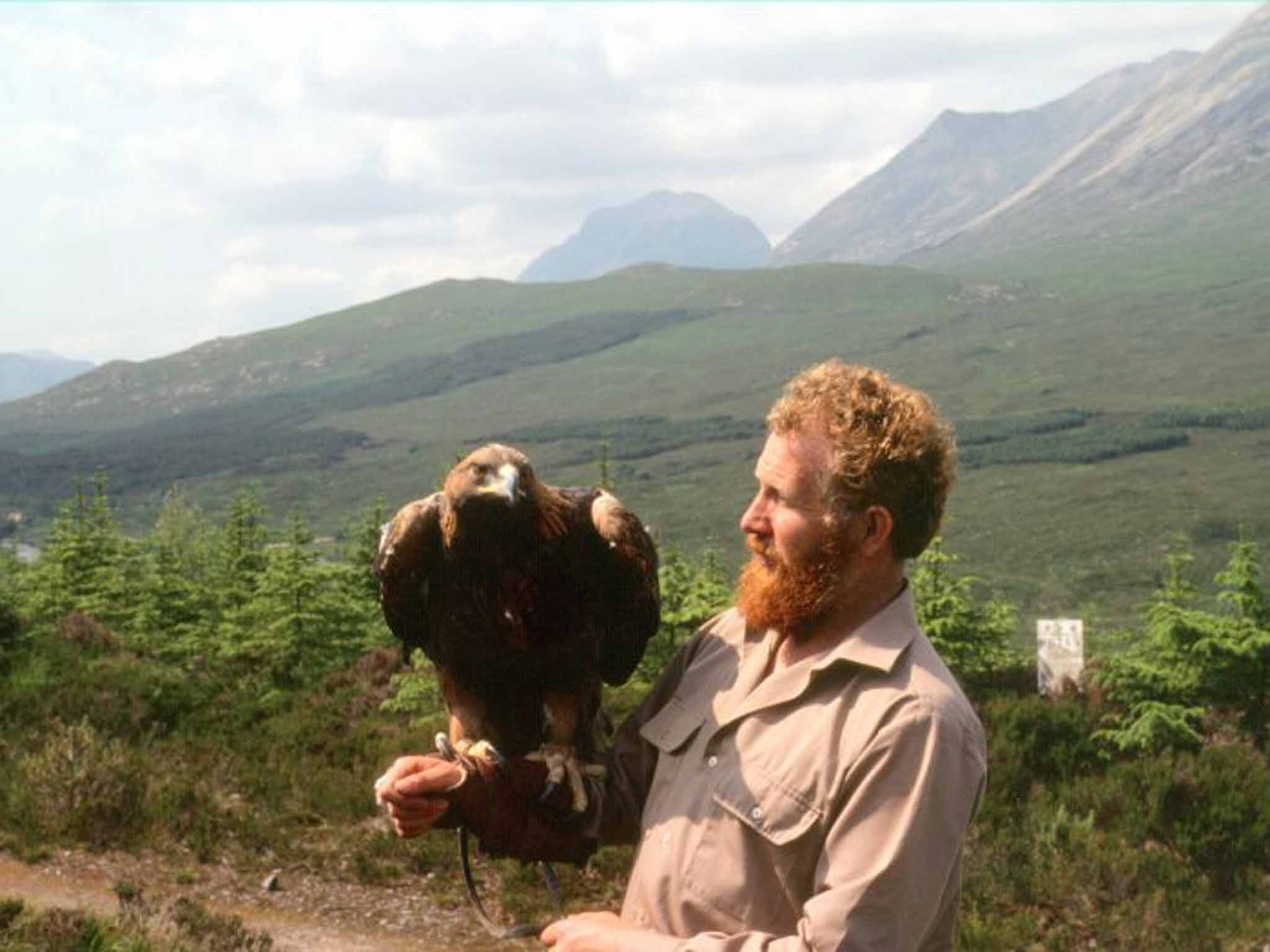Dick Balharry: Conservationist and gamekeeper who fought to preserve the wilderness and wildlife of the Scottish Highlands
His leadership and passionate advocacy made him a respected voice in the debate over the future of the Highlands

Dick Balharry was a well-known champion of wild land north of the border and an authority on Highland animals and birds. A strongly-built, red-bearded man, he looked and sounded the very image of a Highlander, although in fact he hailed from lowland Dundee. Though without formal qualifications, he acquired an intimate knowledge of wildlife by hand-rearing abandoned or injured animals and birds.
Always feisty and forthright in his opinions, Balharry came to realise that the key to success in managing wild land lay in restoring the balance between grazing animals and the natural vegetation. He was firmly of the view that the Highlands should always remain a living landscape and not a museum.
Balharry often appeared on Scottish radio or television, sometimes with his wild pets in tow. He was also a gifted photographer. His leadership and passionate advocacy on a range of land-use bodies, from the Ramblers to the National Trust for Scotland, made him a respected voice in the debate over the future of the Highlands.
Dick Balharry was born and brought up at Muirhead, near Dundee. Given the freedom to wander, he became a keen boy naturalist, and kept many pets including a kestrel, a jay and a jackdaw.
He left school at 15 and attended Dundee's Engineering Trades College for a year. But after turning up for work in a local factory he realised at once that he was in the wrong job. "I was gone within the hour," he recalled.
He found a more congenial post as kennel boy and underkeeper on a Highland estate at Tighnabruaich in Argyll. The work involved trapping and killing predators and patrolling the local river on the look-out for poachers. However the estate objected to his keeping a captive raven and a fox and told him he must either let them go or find another job. "So I left with my furry and feathered friends."
His next job was as an apprentice stalker in Glen Lyon under the watchful eye of Archie MacDonald, "who mentored me in the soft skills of the hill". He put the experience to good use a year later after securing an appointment in the Red Deer Commission in which capacity he travelled across Scotland, culling marauding deer and marking deer calves. In the process he became adept at tracking down the eyries of peregrines, golden eagles and other raptors as well as the dens of wild cat and pine marten. He became an authority on martens and at various times kept tame, hand-reared ones at his home. Balharry had a natural gift of empathy with animals and excelled in telling stories about them.
In 1962, aged 24, he was appointed warden to Britain's first National Nature Reserve, the 10,000-acre estate of Beinn Eighe in Wester Ross. There he became responsible for the conservation of the full range of flora and fauna and improving public access. Very much in his element, Balharry worked with neighbouring estates to try and form a common policy over Red Deer management, and with scientists and foresters to revive the aging natural pinewoods. He also helped to gather evidence of the serious effect that pesticides were having on birds of prey and co-wrote a key scientific paper on the then declining Golden Eagle.
In 1969 Balharry attended a course on the management of national parks in America and Canada which gave him a broader perspective on the conservation problems of the Scottish Highlands. In 1970 he was promoted to Chief Warden, with responsibility for all national nature reserves in North-east Scotland, including the 64,000-acre Cairngorms reserve.
Most of this land was privately owned and the Nature Conservancy Council (NCC) could do little to control red deer numbers. But in 1986 Balharry was finally given the opportunity to put his ideas into practice when the NCC acquired the estate of Creag Meagaidh, on the north shore of Loch Laggan, to save it from afforestation. Soon woodland and scrub were regenerating vigorously after what some people saw as a ruthless cull of deer.
When, in 1990, Scotland was given its own conservation agency, Scottish Natural Heritage, Balharry became its Area Manager for Badenoch and Strathspey, Moray and Nairn, based at Newtonmore in Speyside. He retired in 1997 at the age of 60, but his career was far from over. He went on to serve Ramblers Scotland as its vice-president, the John Muir Trust, latterly as its chairman, and was an energetic member of various forums on forestry and land use.
In 2010 he was appointed interim chair of the National Trust for Scotland (NTS), then in severe financial trouble. It was a popular posting, Balharry being regarded as a progressive force in land management. Under the new chairman, Sir Kenneth Calman, with Balharry as his vice-chair, the fortunes of the NTS improved after a root-and-branch overhaul.
Dick Balharry was awarded the MBE in 1986 and in 2010 received an honorary Doctorate in Science from Abertay University, Dundee. A few days before his death from cancer he received the coveted Geddes Medal from the Royal Scottish Geographical Society, which he shared with his wife, Adeline.
Richard Balharry, gamekeeper, conservationist, animal expert and photographer: born Muirhead, near Dundee 3 September 1937; MBE 1996; married 1962 Adeline Croal (one daughter, one son); died Newtonmore 22 April 2015.
Subscribe to Independent Premium to bookmark this article
Want to bookmark your favourite articles and stories to read or reference later? Start your Independent Premium subscription today.

Join our commenting forum
Join thought-provoking conversations, follow other Independent readers and see their replies